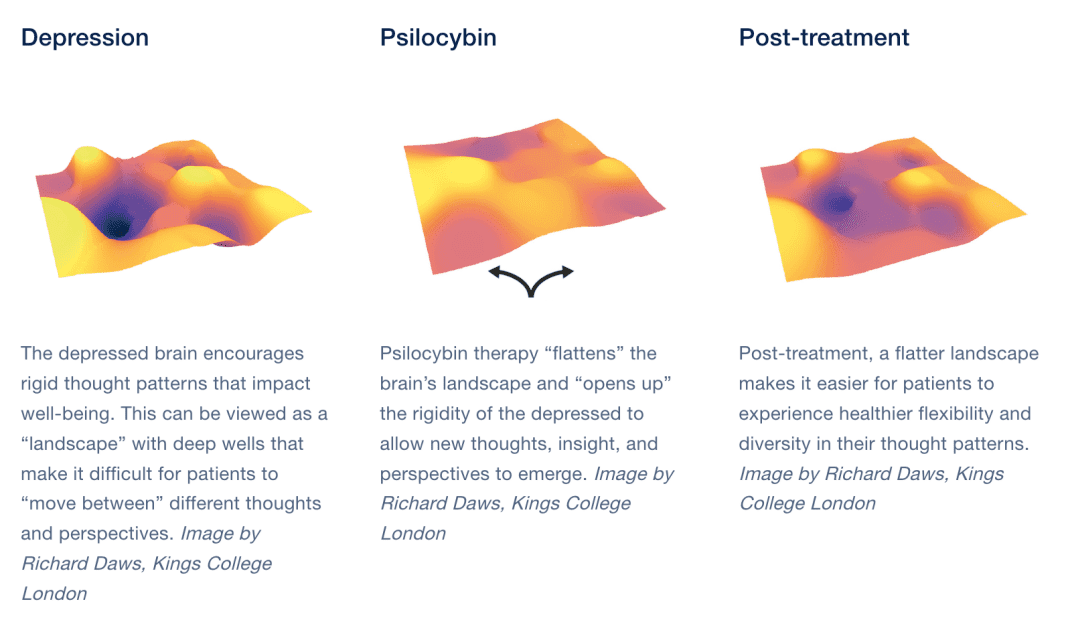How Psychedelics Can Help Treat Mental Health
Key Points:
- Psychedelic research over the past few decades has measured significant improvements in numerous mental health conditions.
- Particular interest lies in psychedelics role in improving depression and anxiety.
- Other benefits include increased creativity, enhanced consciousness, spiritual experiences, and treatment for addiction.
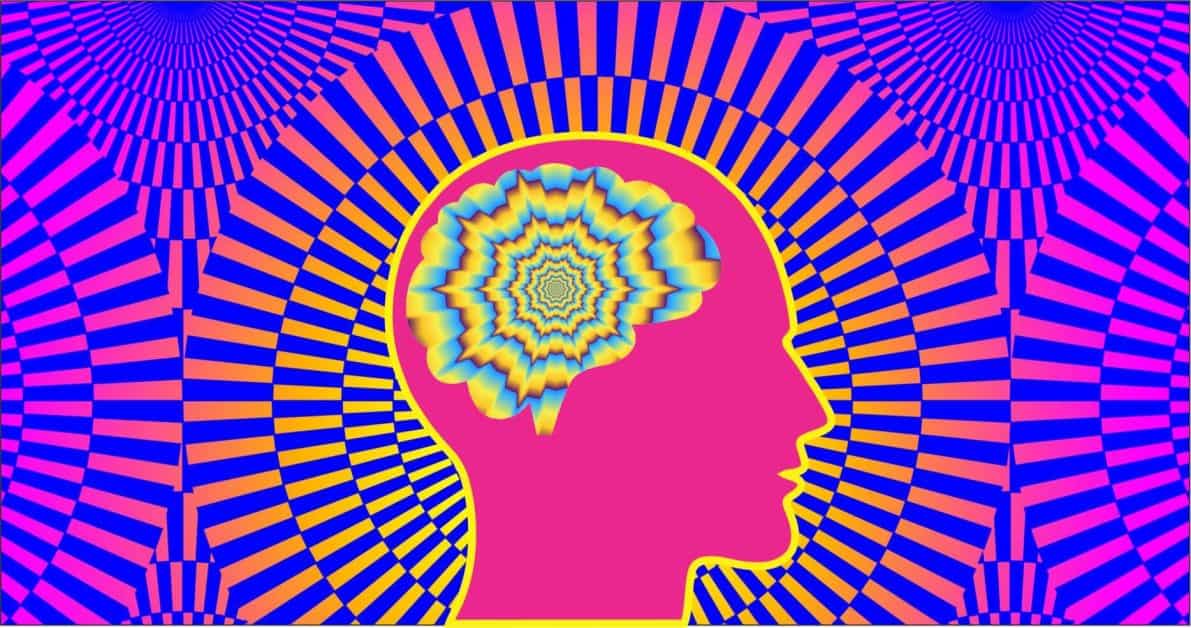
While psychedelics are often thought of as recreational drugs for hippies and those wishing to experience mind-bending trips, psychedelic research over the past few decades has revealed a vast array of promising medicinal benefits, from reducing depression to taming addictions.
A 2022 survey found that 28% of Americans had used a psychedelic at some point, making them one of the most popular recreational drugs available.
While this may worry some, this survey found that psilocybin “magic” mushrooms were the safest recreational drug, with just 0.2% of users seeking emergency medical treatment after use.
From a 54% reduction in PTSD patients after just two MDMA-assisted therapy sessions to a single dose of LSD significantly reducing anxiety and depression in patients with terminal illnesses, studies have shown changes in mental health that are unmatched with current medication.
This article will explore the depths of this exciting field, overviewing the significant medicinal benefits psychedelics have revealed, from significantly reducing depression and PTSD to entering a higher level of conscious awareness – benefits so great you may feel trippy just reading them!
What are Psychedelics?
The word psychedelic comes from the Greek words “mind” and “to manifest”, literally translating to “mind manifesting” – the implication being that psychedelics can reveal hidden but powerful potentials of the human mind.
Psychedelics are a type of hallucinogenic – drugs that trigger non-ordinary mental states commonly referred to as psychedelic “trips”. Their use results in psychological, visual, and auditory changes resulting in an altered state of consciousness.
Psychedelics - A Brief History
The use of psychedelics is nothing new; archaeological studies have found evidence of their use by ancient cultures going back over two thousand years.
In the 1950s and 60s, attention turned to psychedelic use beyond the spiritual towards medicinal. Just as great progress was being made, however, the federal Controlled Substances Act banned psychedelic use and possession to such a degree that research had to be stopped.
Alas, in 2000, A group of Johns Hopkins researchers was the first to obtain regulatory approval in the United States to resume research with psychedelics.
Since then, an increasing number of studies have found great benefits from the use of psychedelics, from relieving the detrimental effects of anxiety and depression to the expansion of consciousness.
How do Psychedelics Work?
The exact nature of how psychedelics induce changes in perception and cognition is still unknown, but researchers have identified the neurotransmitter serotonin (similar to dopamine) as the fundamental compound behind the changes.
Psychedelics act via serotonin 2A receptor agonism, the ability of a substance, such as a drug or chemical, to bind to and activate serotonin 2A receptors in the brain.
Most psychedelics activate the receptor and trigger alterations to signaling pathways in the brain, resulting in changes to perception, mood, and emotional state. MDMA, however, acts by effectively flooding the brain with serotonin but results in the same effects.
One of the most significant effects of psychedelics is the availability of glutamate, a neurotransmitter involved in cognitive processes such as learning and memory.
An increase in glutamate is thought to facilitate a breakdown of communication barriers between different brain regions, allowing new and novel connections to form.
The Psychedelic Effect on the Default Mode Network (DMN)
Psychedelic substances have been shown to decrease activity in the default mode network (DMN), a set of brain regions that are active when not engaged in a dedicated task, such as when daydreaming, meditating, or self-reflecting.
Bad habits, addictions, and traumatic memories can be visualized as deep wells on a flat surface, such as those pictured in the image below from Richard Daws, Kings College London.
A depressed brain encourages rigid thought patterns that can be represented as deep troughs (deep blue wells in the image above). These deep troughs make it difficult to escape and move between different thoughts, and patients find themselves stuck in their mentally damaging ways.
Psilocybin, however, flattens the wells and troughs in the landscape, as shown in the middle image, allowing a patient to escape the rigidity of depressive thoughts and providing the space to create new positive ones.
Even after psilocybin treatment, the landscape remains flatter than before treatment for a significant time (image on the right), facilitating the creation of healthier and more diverse thought patterns long after psilocybin has worn off.
Types of Psychedelic
There are estimated to be hundreds of psychedelics, both natural and synthetic, that all exert different mental effects. The most commonly studied and medicinally promising are mescaline, LSD, psilocybin, and MDMA, commonly known as classical psychedelics.
Mescaline
Mescaline is a compound found predominantly in various species of cacti. This psychedelic drug is known for its strong visual and perceptual changes, as well as its ability to alter states of consciousness and enhance introspection, lasting between 8-12 hours.
Compared to other psychedelics, its effects are relatively gentle and are favored by those seeking an introspective psychedelic experience; one reason why it has long been used for religious and spiritual purposes by indigenous people in Central and South America for centuries.
LSD
LSD (lysergic acid diethylamide) is not found naturally; it is synthesized in a lab from a type of fungus called ergot. LSD gained widespread attention in the 1960s as a popular recreational drug associated with the counterculture movement.
One of the key distinguishing features of LSD is its potency; LSD is one of the most potent hallucinogens known, with effects that can last 6 to 12 hours after ingestion. It is typically taken orally in the form of a small piece of paper or sugar cube that has been soaked in the drug.
One of the most notable effects of LSD is its potent effect on perception, causing a profound change in the way that people perceive the world around them, such as changes in colors, patterns, and a warping effect on time (some report a slowing of time while others experience a speeding up). Many also report a feeling of merging with their environment.
LSD is known to produce intense trips (both positive and negative). Some users report feelings of intense joy or euphoria, while others may experience feelings of anxiety or paranoia.
Psilocybin
A naturally occurring psychedelic found in over 200 species of mushrooms, psilocybin is commonly known as “magic mushrooms”.
Psilocybin produces a moderate to strong psychedelic experience, lasting between 4 and 6 hours. Some of its most notable effects include intense perceptual and emotional changes, an altered sense of time, and ego death – a state of consciousness where one’s sense of self or identity dissolves, leading to a feeling of “oneness” with the universe.
Having been the subject of much research over the past few decades, psilocybin shows promise as a treatment for many mental health conditions, including depression, anxiety, addiction, and relief for cluster headaches and migraines.
MDMA
MDMA (3,4-methylenedioxymethamphetamine) is a synthetic compound that is commonly referred to as “ecstasy” or “molly” in its recreational form.
MDMA differs from other popular psychedelics in a few ways. Whereas other psychedelics, such as LSD and psilocybin, bind to receptors that activate it, MDMA effectively floods the brain with serotonin. As a result, it has a more pronounced effect on mood, emotions, and social behavior compared to other psychedelic compounds.
A second feature of MDMA is its unique effect on the amygdala, which is responsible for processing emotions such as fear and anxiety. By reducing activity in this area, MDMA suppresses these emotions leading to feelings of calmness and tranquility.
Whereas the other psychedelics mentioned induce visual hallucinations, MDMA does not. Instead, it is often described as enhancing emotional well-being and sensory pleasures. Reports of interpersonal connectedness and empathy are often conveyed, attributed to increased activity in the prefrontal cortex.
Due to the unique serotonin flood mechanism, MDMA can result in long-term damage to serotonin-producing neurons in the brain, as well as increases in heart rate, blood pressure, and dehydration.
What are Psychedelics Used For?
Ultimately, the large amounts of funding that have gone into psychedelic research have one main purpose – to create treatments for mental health issues not effectively treatable with current medication. Below are five encouraging aspects that psychedelic pharmacology hopes to improve.
1) Treatment for Depression
Depression is notoriously hard to tackle, but psychedelics such as psilocybin have shown great promise in tackling the issue from another angle.
Previous studies by John Hopkins Medicine have shown that psilocybin is effective in relieving major depressive disorder symptoms in adults for up to a month.
Recent continued research, however, has added further promise for psilocybin, with this report showing that psilocybin-assisted therapy (taking a small dose in a controlled environment under professional supervision) provides benefits for at least one year after taking.
In the study, 27 participants with a long-term history of depression were given two doses of psilocybin two weeks apart. The psilocybin treatment produced significant decreases in depression up to 12 months after treatment, with 75% reporting improvements in depression and 58% considered in full remission.
While further research is required to determine its effects over greater periods, the significant effects, which are immediately apparent with a long-lasting duration, may provide a uniquely useful new treatment for depression.
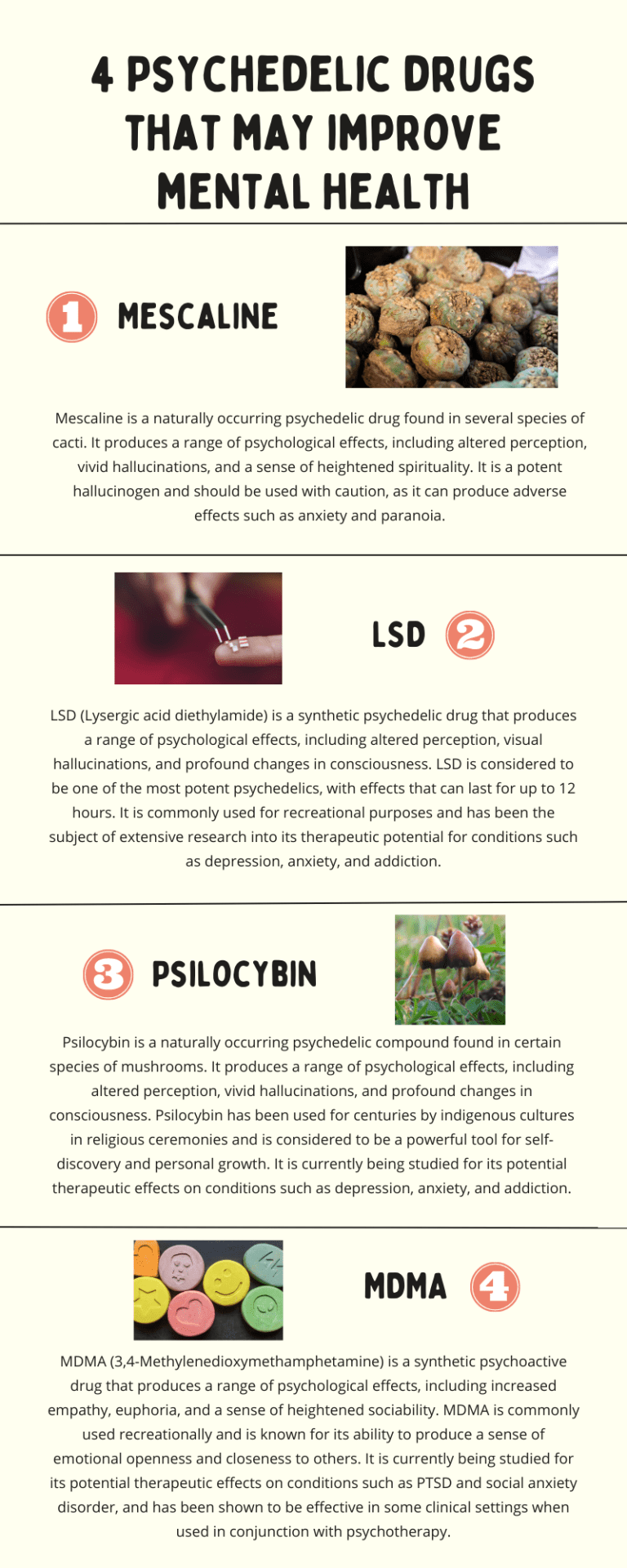
Reduction of Anxiety in Cancer Patients
One particular group to benefit from psilocybin’s antidepressant nature is terminal cancer patients, who often develop chronic symptoms of depression and anxiety, exacerbating the problem.
This paper studied the effect of psilocybin on 51 cancer patients with life-threatening diagnoses and symptoms of depression. High-dose psilocybin resulted in decreases in measures of depressed mood and anxiety, along with increases in quality of life, life meaning, optimism, and decreases in death anxiety.
Having followed up with these patients after six months, 80% of participants continued to show clinically significant decreases in depressed mood and anxiety.
2) Creative Boost
Many famous and accomplished people have attributed much of their creative ability to psychedelics. Steve Jobs, the co-founder of Apple, often praised the creative boosts from certain drugs, calling his LSD experiences “one of the two or three most important things he had done in his life”.
John Lennon, the founder of the Beatles, was also known for his experimentations with LSD and marijuana in the prime psychedelic experimenting years of the 1960s.
Psychedelics have been reported to increase creativity and promote divergent thinking, thought to be related to the breakdown of communication barriers in the default mode network, thus allowing new connections to form.
Other studies, however, have hypothesized that it is not that psychedelics increase creativity absolutely, rather, it is the breaking down of stubborn and limiting conventional thinking that gives rise to new and novel thoughts.
3) Expanding Consciousness
Many who experience psychedelic trips report a sense of deepened and expanded consciousness, particularly with feelings of ego death and a sense of mystical experiences – characteristics of such include feelings of unity, transcendence, and interconnectedness.
Scientists believe subjective experiences such as these might be partially explained by changes to the claustrum, a thin sheet of neurons deep within the cortex. While the exact purpose of this structure is unknown, researchers, including Francis Crick (who discovered DNA), speculated that it forms the seat of consciousness, responsible for awareness and a sense of self.
What scientists do know about the claustrum, however, is that it contains a large number of receptors that are targeted by psychedelic compounds.
For example, this study showed a significant reduction (15-30%) in the claustrum after ingestion of psilocybin, correlating self-reported effects of being connected to everything with a reduced sense of self.
4) Spiritual Experiences
For those of a spiritual conviction, psychedelics can provide intensely profound spiritual experiences, leaving a lasting positive effect on their outward views of the world and deepening a sense of purpose.
Whether you believe in the spiritual or not, it is clear that the subjective experiences of those who feel as if they contact and interact with the divine are left with deep feelings of gratitude, connectedness, and purpose, all of which can greatly improve one’s mood and outlook of life. Whether the experience is “real” or not, the benefits most certainly are.
5) Addiction Treatment
One area of great interest to scientists is the possible role of addiction treatment that has previously proved difficult to treat.
Psychedelic research has shown great promise as a treatment for a range of addictions, including tobacco, alcohol, and various illicit drugs.
A study by Johns Hopkins Medicine examined the effect of breaking a smoking habit on participants using psilocybin (magic mushrooms).
Whereas the most common smoking cessation techniques, such as nicotine replacement, typically achieve less than a 30% success rate after six months, the abstinence rate for those treated with psilocybin was 80%, greater than the 35% from the most effective smoking cessation drug varenicline.
One possible mechanism for this is thought to be the decrease of activity in the Default Mode Network, where stubborn habits and neural connections have been shown to break down following ingestion of psychedelics, allowing new healthier ones to form.
Note, however, that merely ingesting psilocybin is not enough to break the habit alone; the treatment included controlled administration of the drug in the context of a treatment program involving cognitive behavioral therapy.
The change is thought to be due to cognitive changes that affect a person’s motivations and reflections on life, also hinting at why just a single psychedelic dose is enough to provide long-term benefits, as opposed to traditional smoking cessation drugs that are effective only when acting in a person’s system.
It is not just psilocybin that appears to have anti-addiction properties; this survey tested the effects of moderate and high doses of LSD (as well as psilocybin) on 343 participants, which showed a significant reduction in alcohol consumption post-treatment.
After the psychedelic experience, 83% of participants no longer met the clinical addiction requirements. Greater psychedelic doses, insights, mystical-type effects, and personal meaning of experiences were associated with a reduction in alcohol consumption, controlling for prior alcohol consumption and related distress.
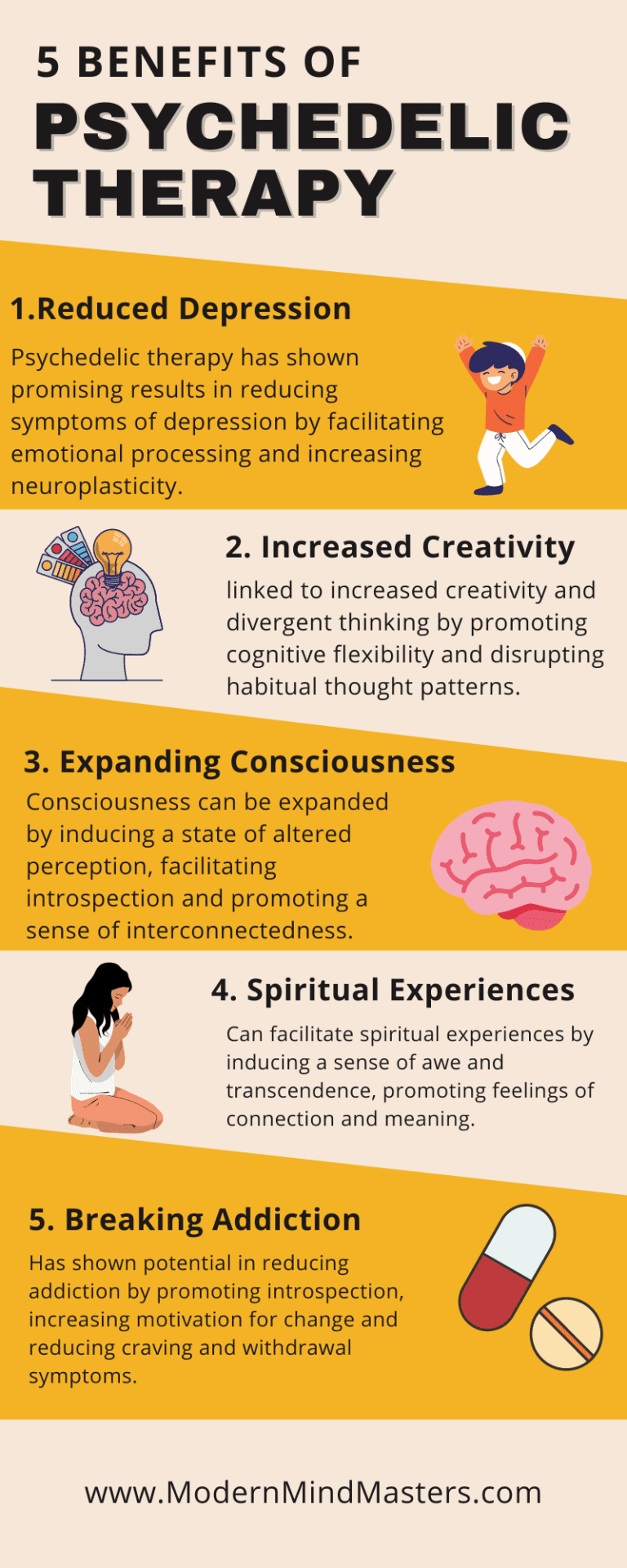
Negative Effects of Psychedelics
If this all sounds too good to be true, the powerful effects of psychedelics do not come without their share of risks.
Firstly, personal use of many psychedelics is illegal in much of the world under UN conventions; occasional exceptions for religious, research, and medicinal purposes differ per region.
While research has shown that psychedelics are physiologically safe and rarely lead to addiction, many suffer from bad trips, particularly those with psychological conditions such as PTSD, where feelings of anxiety, paranoia, and even psychosis can surface. Considering a trip can last up to 12 hours for some drugs, this can cause significant discomfort.
Psychedelics can cause physical side effects such as nausea, vomiting, and headaches, especially when using synthetic compounds or improperly prepared material.
Although research has shown many improvements in mental health, when psychedelic therapy is not performed in a controlled manner, such as incorrect dosages, poor assessment of an individual’s mental state, and the setting in which the drug is used, detrimental effects can occur.
Psychedelics should only be used under the supervision of a trained professional and in a safe and controlled environment. Professional guidance is mandatory to extract the full benefits and avoid potential risks.
Conclusion
Although still early days, the future of psychedelic medicinal research is bright and hopeful.
Despite being used for centuries for spiritual and enlightenment purposes, medical research has shown its potential for helping treat debilitating and hard-to-treat psychological issues, including depression, anxiety, ADHD, and addiction, as well as providing creative boosts and feelings of connectedness and enlightenment.
Due to the sensitive nature of drugs such as these, and the dangers from improper usage, it will likely be a long and slow road until it is fully integrated into modern medicine.
So, whether you’re a believer or a skeptic, one thing is certain: psychedelics are mind-bending, and quite possibly, life-changing.
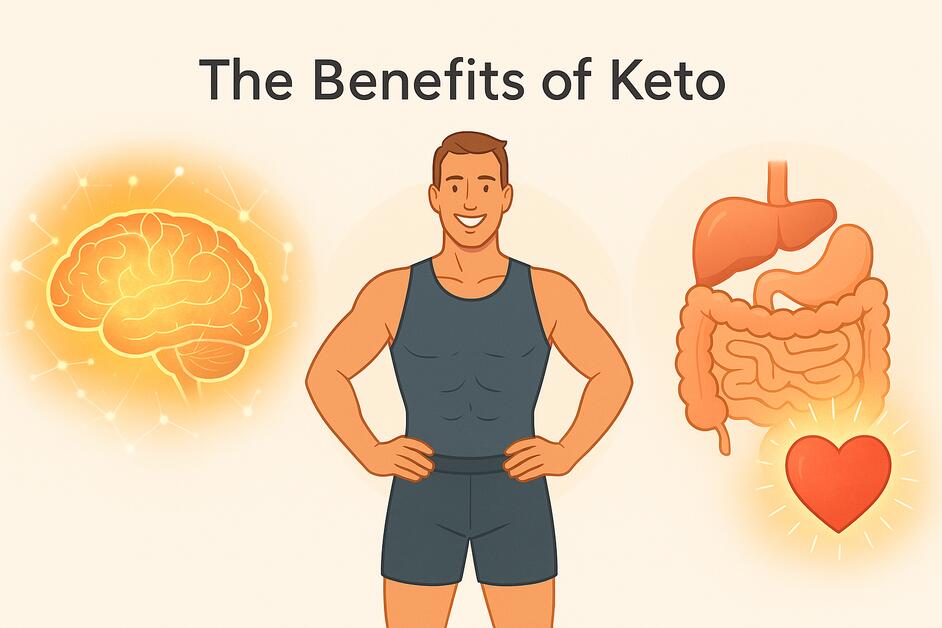
The Benefits of The Ketogenic Diet
The benefits of the ketogenic diet include weight loss, improved energy, and better blood sugar control. It promotes fat burning and mental clarity.
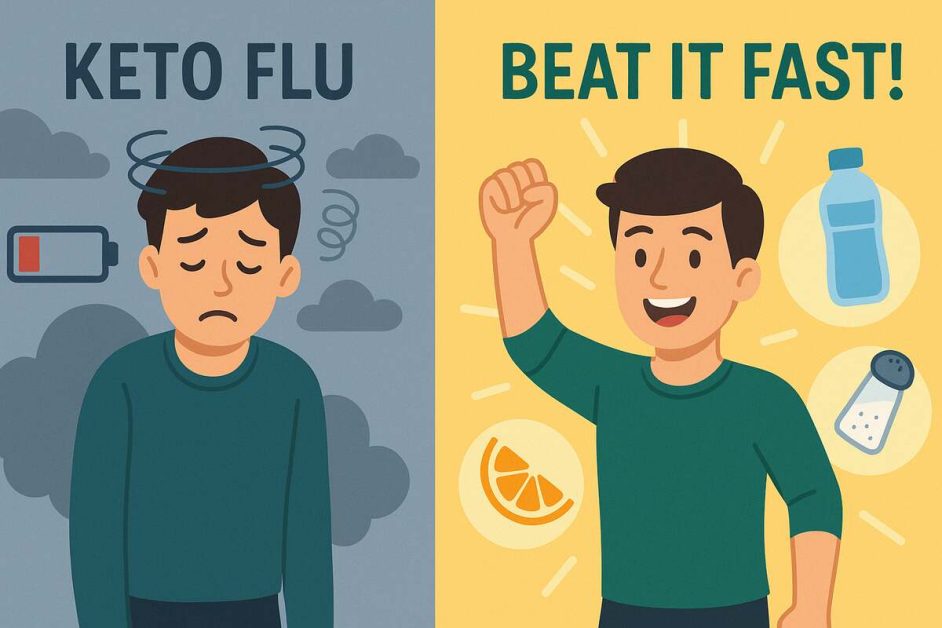
Keto Flu: Symptoms, Causes, and How to Beat It Fast
Feeling tired, dizzy, or foggy on keto? It’s probably keto flu. Here’s what it is—and how to beat it fast.
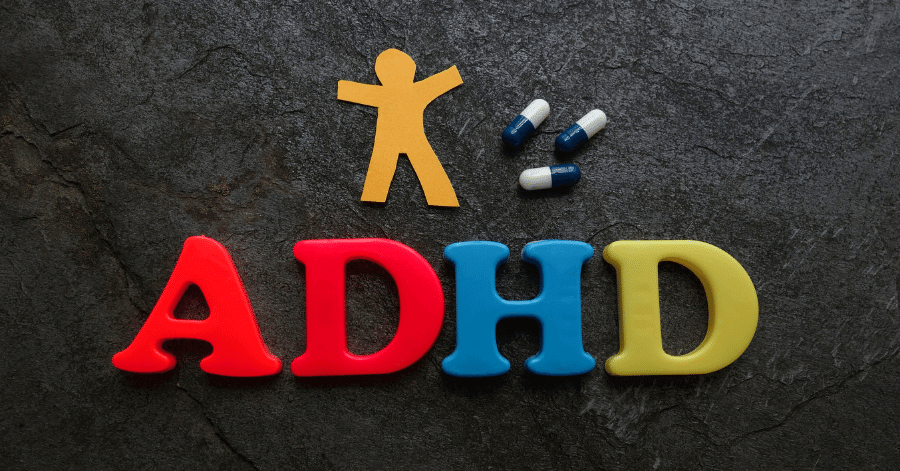
5 Treatments for ADHD – Prescription, Stimulant, Natural, and Non-Invasive
Treatments for ADHD include prescription medication, natural stimulants, natural non-stimulants, and non-invasive techniques. The best course of action, however, depends on the individual.

The Benefits of Grounding – What The Science Says
The benefits of grounding have been scientifically studied and include reductions in inflammation, diabetes, and stress.

Your Neglected Muscles Are Causing Your Pain – The Importance of Massage
Neglected muscle maintenance causes all manner of symptoms, including lower back pain and headaches. Here’s how to prevent it.

5 Powerful Ways to Boost Your Social Skills Today
The success you attain in life depends largely on the strength of your social skills. Here are 5 of the most powerful ways you can boost yours today.
